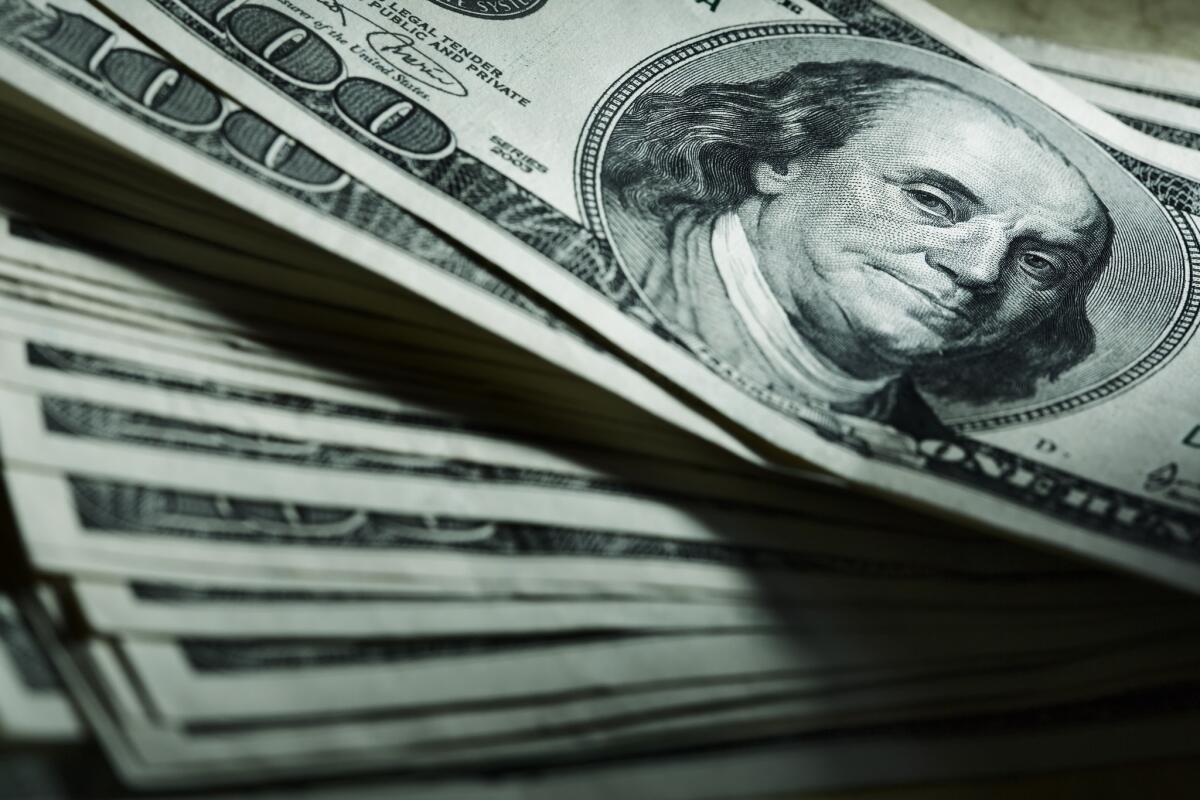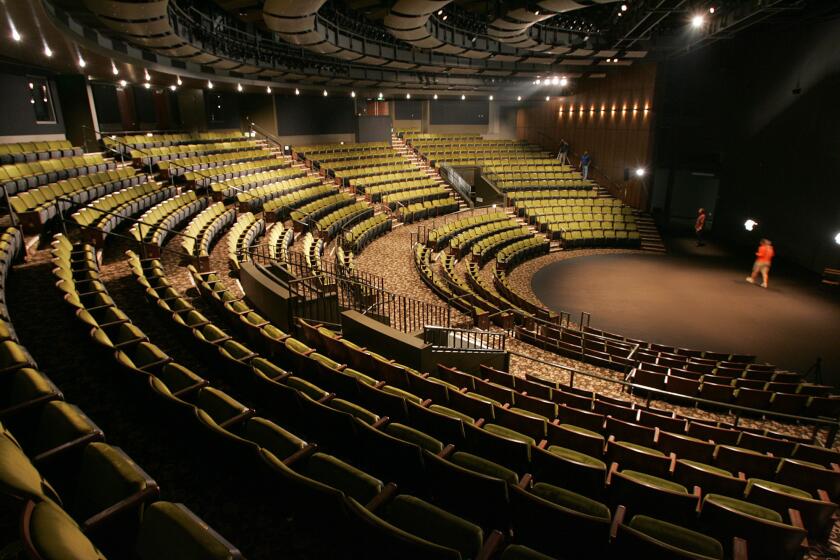Should museums and other arts groups draw on endowments to prevent layoffs?

- Share via
The coronavirus crisis has shined a spotlight on the finances of museums — now shuttered, their futures up in the air — and other arts organizations.
The Los Angeles Philharmonic on Wednesday said it was drawing $20.6 million from its endowment to help close an $80-million budget gap, lessening the scope of staff layoffs and furloughs.
For museums, revenue has declined if not disappeared from admissions, cafe and retail sales, space-rental income, philanthropic donations and investment earnings. Even though they’re closed to the public, museums still face myriad expenses, including security, insurance, possibly rent and staff compensation.
The American Alliance of Museums estimated that because of coronavirus-related closures, museums in the U.S. are collectively losing at least $33 million a day. Institutions likely will be dipping into their endowments, said Chronicle of Philanthropy editor Stacy Palmer, to stay afloat during these unprecedented times.
After laying off all part-time employees last week, the Museum of Contemporary Art institutes cuts for full-timers. Only four security personnel are spared.
But what does that actually mean?
The Times reached out to museum directors, financial advisors and philanthropy experts to clarify how endowments typically work as well as how they might help museums pull through the pandemic. Here’s a crash course:
What is an endowment?
It’s a pool of assets that is invested and that generates annual income, which an institution can draw on toward expenses. It’s typically made up of cash gifts to the museum, but the principal funds aren’t meant to be tapped — only the earnings from it are. If a $100-million endowment generated about $4 million in interest and stock dividends annually, the $4 million might be spent but the original $100 million would be preserved. Generally, the principal is held in perpetuity to produce revenue for general and specific purposes. The larger the endowment, the more stable the institution is.
Where does endowment money come from?
Mostly from donations or bequests from board members, other individuals or foundations. Interest, dividends and appreciation — say, the value of stocks growing to $50 a share from $35 a share — can build on existing endowment funds.
Where are funds invested?
Typically, museum endowments are invested in a diversified portfolio of stocks, bonds and mutual funds — often with an emphasis on safer, conservative investments — as well as in alternative assets, such as hedge funds, private equity or real estate. Usually a third-party custodian such as Fidelity, Charles Schwab or a bank holds the assets.
Who manages the endowment and decides whether to spend it?
An institution’s investment committee may work with outside financial advisors, but the board votes on final decisions.
What is endowment revenue used for?
A museum typically draws on earnings equal to about 4% to 6% of the endowment to cover operating expenses annually — everything from staff salaries and building utilities to exhibition development and marketing. Los Angeles’ Museum of Contemporary Art, which had an endowment of $137 million prior to the pandemic, drew nearly $6 million this fiscal year. That meant the endowment was providing about 30% of the museum’s annual total revenue.
The percentage drawn from the endowment is based on a rolling average, typically over 24 to 36 months, though it can be longer. That levels out the highs and lows. So when the markets are topsy-turvy — or drastically down, as is the case for 2020 — the institution won’t feel the negative effects for a period of time.
Do laws govern how museums manage endowments?
Laws vary state to state. The Uniform Prudent Management of Institutional Funds Act, in effect in every state but Pennsylvania, provides guidance for investing and for determining the amount to be drawn from an endowment for income. It also outlines a process for deviating from donor restrictions. In some states, the museums would go to the attorney general about that; in others, they would go to court.
What’s considered a healthy endowment?
There is no benchmark for museums. The Museum of Latin American Art in Long Beach had a pre-pandemic endowment of $26 million. L.A.’s Hammer Museum had an endowment that was $125 million at the start of this year. In New York, the Metropolitan Museum of Art’s endowment stood at $3.6 billion in early March.
Museums that receive a steady stream of government funding often have smaller endowments, partly because the public funding basically substitutes for endowment earnings. The Los Angeles County Museum of Art, which receives $25 million to $30 million on average in county funding annually, has an endowment of just $136 million even though it is one of the largest art museums in the West.
What’s the difference between restricted and unrestricted funds?
A donor often earmarks funds for a particular use — perhaps acquisitions, education, research, conservation or building improvements. Often, a lot of money in endowments is tied up in these restricted funds. Unrestricted funds can be used for anything, including basic operational costs.
The Assn. of Art Museum Directors has temporarily loosened its discipline around museums’ use of restricted funds, which includes money in endowments and other donations. The association’s guidelines are best practices, not law, but the organization does usually take punitive action against museums that violate the guidelines. In response to the current economic crisis, however, the association has temporarily suspended taking disciplinary action if museums use restricted endowment funds for non-delineated purposes, such as operating expenses. The association is not giving permission to ignore donor restrictions, and it is encouraging museums to get consent from living donors or state authorities.
Why don’t more museums use endowments to avoid layoffs and furloughs?
Endowments are often called “rainy day funds” — and it’s pouring right now. But calling an endowment a “rainy day fund” is “grossly inaccurate,” said Brent Benjamin, Saint Louis Art Museum director and AAMD president. Endowments are not cash reserves that can so easily be tapped. You shouldn’t spend the principal, and unrestricted earnings are typically committed to annual budgets in advance.
“Staff salaries aren’t the only expense,” he said. “There are a lot of different pieces to a museum budget. Museums are certainly trying to support their staff in every way they can, but it’s not always enough. Mostly it’s not.”
What are the big questions facing museums?
Whether to tap into the endowment, how much to tap and what the risk is to the future are the big issues, said the Chronicle of Philanthropy’s Palmer. “It causes great arguments. If you’re an employee, you might say, ‘We, the museum, need to keep going, that’s what the money is for.’ But if you’re the board chair, you might say, ‘We have to think about the long-term or we might not be here 50 years from now.”
George Suttles is research director at the Commonfund Institute, a think tank for the Commonfund, which manages the assets of about 50 cultural institutions nationwide.
L.A.’s largest nonprofit theater company suspends the rest of the season, including its LeBron James play “King James.” It projects a massive deficit.
“These are difficult times,” he said. “Small and midsized museums, especially, who had already been under financial pressures before COVID-19, are going to have to make some hard decisions. For a lot of museums, there’s no other recourse than to spend, to draw down more from their endowment.”
Ultimately, Suttles added, “museums will depend, as they traditionally have, on philanthropy to recover and rebuild.”
More to Read
The biggest entertainment stories
Get our big stories about Hollywood, film, television, music, arts, culture and more right in your inbox as soon as they publish.
You may occasionally receive promotional content from the Los Angeles Times.













